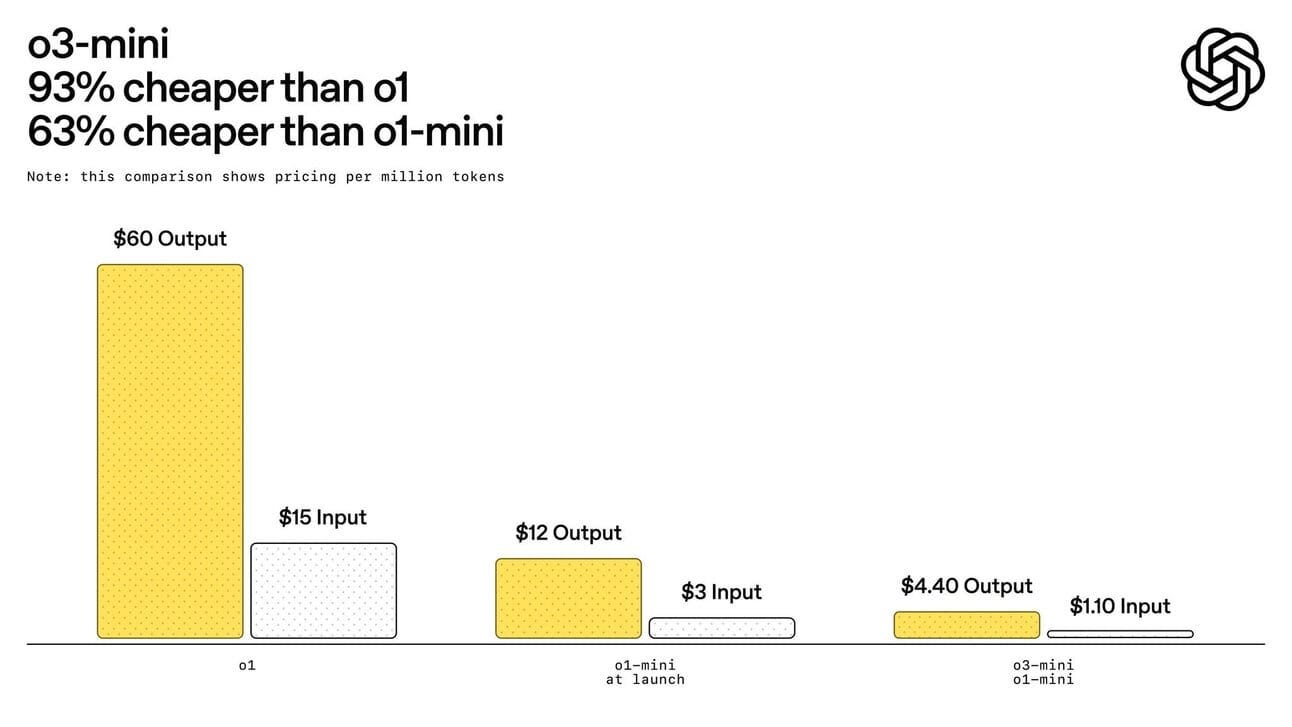DeepSeek R1 vs OpenAI O3 Mini
The AI Battle from a No-Code Perspective

This is the go-to newsletter and community for no-code AI tools, news and productivity insights.
The last couple of weeks have been dominated by AI discussions, and for good reason. We’ve had two major announcements that have everyone talking: DeepSeek R1 and OpenAI’s O3 Mini.
DeepSeek R1 is an AI model out of China that has raised eyebrows—not only because of its impressive performance but also because it was built for under $6 million. That’s a fraction of what it costs to develop similar models. This has sparked plenty of questions: How did they acquire so many GPUs? How did they achieve this level of efficiency? And—perhaps the biggest controversy—did they use OpenAI’s data?
Meanwhile, OpenAI launched O3 Mini, an AI model that’s making waves on its own. It’s smarter, faster, and more affordable than previous models, adding to the new benchmark for AI accessibility. With OpenAI’s influence and DeepSeek’s disruptive pricing, this is an AI showdown worth analyzing.
I broke down both models from a no-code perspective—which one is better for builders, entrepreneurs, and founders looking to integrate AI without writing code?
OpenAI O3 Mini: What’s New?
Sam Altman, OpenAI’s CEO, announced O3 Mini as a model that improves on previous iterations with better reasoning capabilities and cost efficiency. Some highlights:
Multiple reasoning levels: You can now choose between low, medium, or high reasoning, depending on your needs.
Competitive performance: On PhD-level science questions, O3 Mini High outperforms its predecessors.
Large context window: Accepts up to 200,000 input tokens (roughly 150,000 words), with 100,000 output tokens.
Massively reduced API costs: At $1.10 per million tokens, it’s 93% cheaper than OpenAI’s previous models, bringing it closer to DeepSeek’s industry-disrupting pricing.
On the usability side, developers and no-code builders can leverage O3 Mini through OpenAI’s API, making it a powerful tool for automation and AI-driven applications.

o3-mini costing
DeepSeek R1: A Game Changer?
DeepSeek R1 is making waves primarily because of its low-cost API access. While OpenAI’s models have seen dramatic price cuts, DeepSeek still comes in cheaper at 14 cents per million tokens—an incredible difference from OpenAI’s $15 per million tokens for the 4o model.
But pricing aside, what about performance? We ran a few no-code use cases to compare DeepSeek R1 against O3 Mini. Here’s what we found.
Performance Breakdown: O3 Mini vs. DeepSeek R1
We tested both models across multiple AI-driven tasks relevant to no-code entrepreneurs:
1. AI-Powered No-Code App Outlining
We prompted each model to generate a structured plan for building a job board on a no-code platform like Lovable. The goal was to evaluate clarity, structure, and reasoning ability.
DeepSeek R1: Took significantly longer to process but provided a very detailed outline, including a structured table of features and potential no-code tools to use.
O3 Mini (Low & High): Faster responses, with O3 Mini High offering the most refined breakdown. However, it lacked DeepSeek’s detailed integration suggestions.
Verdict: DeepSeek R1 wins on depth, while O3 Mini High offers a more structured and readable breakdown with slightly better clarity.
2. AI-Generated Automations & Integrations
We asked both models to suggest three no-code integrations for streamlining recruitment on the job board build (e.g., notifying recruiters when a candidate applies).
DeepSeek R1: Provided a step-by-step guide, detailing specific tools (Zapier, Make.com, Airtable, Slack) and how to set up the automation.
O3 Mini: Suggested similar tools but lacked implementation details, requiring additional prompting for a step-by-step guide.
Verdict: DeepSeek R1 outperforms O3 Mini by making implementation effortless for no-code users.
3. Monetization Strategies for a No-Code Job Board
For builders looking to make money, we asked both models for two monetization strategies tailored to a no-code job platform.
DeepSeek R1: Suggested pricing tiers, a subscription model, and specific no-code payment tools like Stripe, MemberStack, and Bubble’s native payment features.
O3 Mini: Suggested similar monetization strategies but lacked direct recommendations on specific tools unless explicitly asked.
Verdict: Both models provide solid strategies, but DeepSeek R1 is more practical by integrating tools into its recommendations.
Final Thoughts: Which Model is Better for No-Code Users?
While O3 Mini excels in speed and structured responses, DeepSeek R1 stands out in implementation detail. If you’re an entrepreneur using AI for automation, DeepSeek R1’s real-world applicability and cost-effectiveness make it a serious contender.
Best for speed & structured reasoning: O3 Mini (High)
Best for practical implementation & cost efficiency: DeepSeek R1
As AI continues to evolve, models like these are shaping a future where anyone can build without code. Whether you use DeepSeek or OpenAI, your AI-powered startup is just a few prompts away.
Cheers,
Jagger
P.S. If you think this newsletter might help someone you know, feel free to forward it along.
Plus, here’s a new video that might interest you.
Connect with me here.

